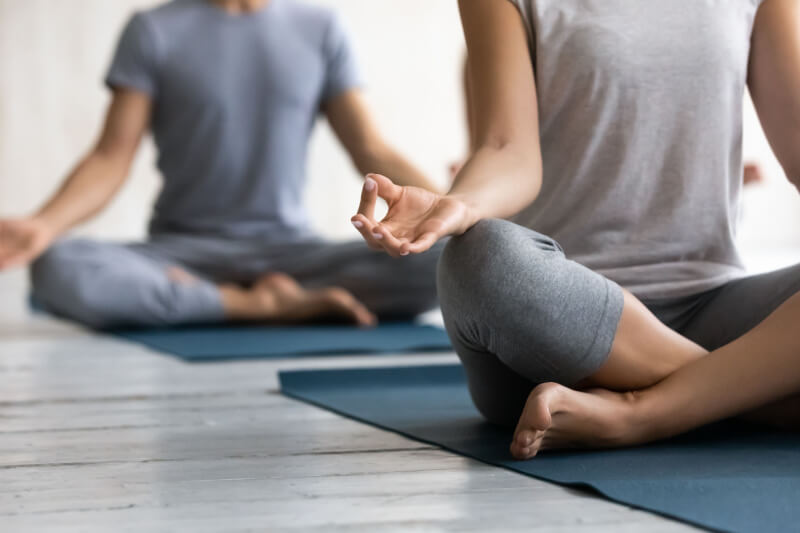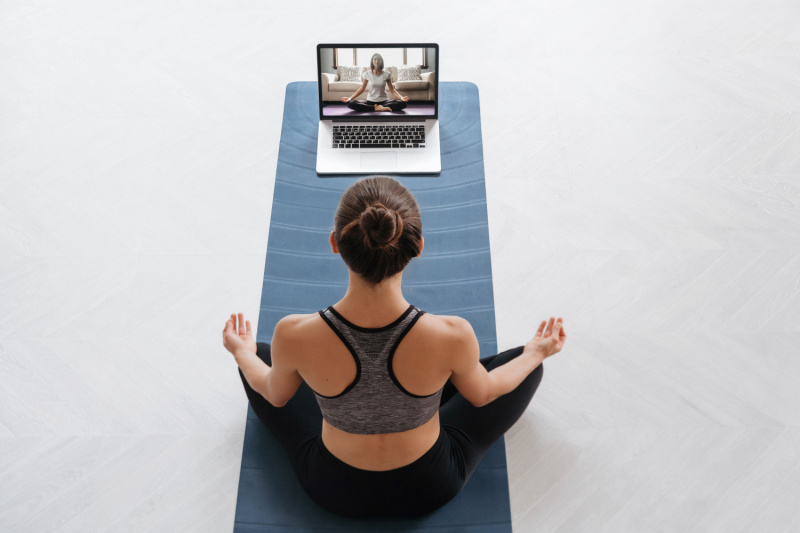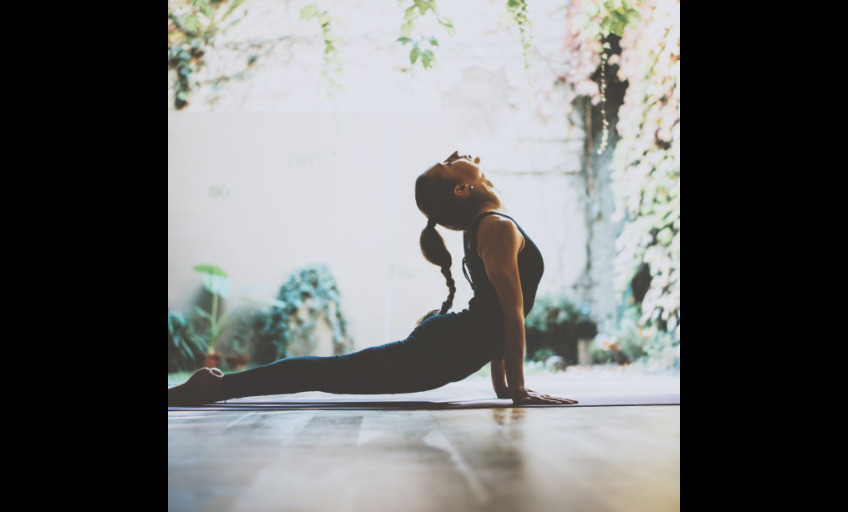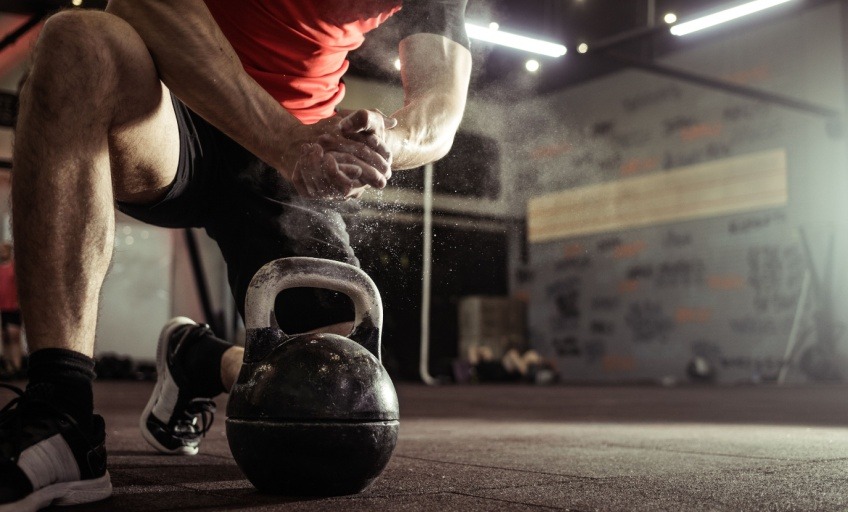Also known as the discipline of force, Hatha Yoga concentrates on mastering the body to attain perfection, where the mind is withdrawn from external objects. A Hatha Yoga class typically consists of a series of physical yoga postures and breathing techniques. These practises are usually performed at a slower pace, emphasizing holding poses in a stable and static manner for extended periods.
What you need to know:
Definition of Hatha Yoga

Let us first understand what is Hatha Yoga. In the word Hatha, “ha” means the sun and “ta” represents the moon. Therefore, it signifies achieving equilibrium between the sun and the moon within oneself. While there are various ways to explore Hatha Yoga that extend your boundaries, at its core, it serves as physical groundwork to prime the body to reach its desired potential.
Hatha Yoga is considered by many as ‘the yoga of force.’ Therefore, Hatha Yoga encompasses a collection of practises involving the body that includes –
- Asana – Yoga postures
- Pranayama – Breathing techniques
- Mantra – Chanting
- Mudra – Hand gestures
- Shatkriyas – Cleansing techniques
- Various visualization forms
Thus, it is a holistic approach to yoga, accounting for the physical, the mental, and the spiritual.
Benefits of Hatha Yoga
Scientists and researchers have found numerous physical, mental and emotional benefits of Hatha Yoga. These include better sleep, improved depression patterns, strengthening core muscles, and managing stress.
Common Hatha Yoga poses for beginners

Hatha Yoga includes a wide variety of poses that target different parts of the body. It is essential to practise these poses with proper alignment under the guidance of an instructor. Here are some poses:
- Mountain Pose: Stand tall with your feet together, grounding through the feet and reaching your arms upward.
- Upward Salute: Extend your arms overhead and press your palms and fingers together. While keeping your feet grounded, stretch the whole body.
- Downward-Facing Dog Pose: Create an inverted V-shape with your body, with your hands and feet on the ground and your hips lifted toward the ceiling.
These are just some of the poses you can try. But you can also attempt the following poses:
- Warrior I Pose
- Warrior II Pose
- Child Pose
- Triangle Pose
- Seated Forward Bend
- Cobra Pose
- Corpse Pose
- Headstand
- Shoulderstand
- Plough Pose
- Fish Pose
- Cow-Face Pose
- Seated Forward Bend
- Peacock Pose
- Dancer’s Pose
- Tree Pose
Physical benefits of Hatha Yoga
Some of the benefits of Hatha Yoga are –
Improved joint mobility
It increases the mobility of your spine and strengthens the abdominal oblique muscles and muscles of your back.
Improved flexibility in the connective tissue
It improves the flexibility of your hamstrings, spine, hips and shoulders. The practise is based on the gradual stretching of muscle and connective tissue around bones and joints, static retention of yoga poses and movements of joints throughout the existing range of motion.
Stretched fascia
Fascia is the matrix of interconnective tissue that wraps and glues everything in the human body together. The deep stretches in Hatha Yoga can help loosen fascia and muscle tissue.
Improved metabolism
It increases your metabolic rate and enhances your overall body strength, making it an excellent addition to any weight management routine.
Improved functioning of all body systems
It cleanses and calms your body and mind, and regular practise can improve strength, flexibility, stamina, balance, reduce stress and bring mental calm.
Stimulate cell repair and regeneration
It repairs and regenerates tissues by replacement and recruitment of cells differentiated from the stem cell.
Improved blood flow in the spinal cord and brain
It improves blood circulation to the body’s vital organs, such as the spinal cord and the brain.
Rejuvenated ligaments
It uses gentle stretches and movements that strengthen and revitalize the ligaments.
Stimulated lymphatic system and body cleanses
It allows the lymphatic system to benefit from movement and muscle contractions without being challenged with removing the resulting lactic acid waste.
Improved overall body motion
It can build strength, improve flexibility, and align posture – while still being gentle enough on your body.
Improved energy levels
Practising brief sessions of Hatha yoga and mindfulness meditation can significantly improve brain function and energy levels.
Improved function of the lungs and heart
It can improve lung health and capacity and keep your heart healthy.
Balanced sympathetic and parasympathetic nervous system
Practising Hatha Yoga can contribute to balance in the autonomic nervous system. It activates the parasympathetic part, which is the basis for rest and digestion, more than the sympathetic part, which induces activation and sometimes stress.
Mental and emotional benefits of Hatha Yoga
Some benefits of Hatha Yoga for your emotional and overall mental wellness are –
Calm senses
It encourages a sense of calmness and tranquillity. It quiets the mind, enhances awareness, and promotes a sense of focus.
Improved concentration
Meditation and mindfulness practises in Hatha Yoga improve concentration, mental clarity, and cognitive function.
Sharpened focus
Various Hatha Yoga practises help in sharpening focus and nurture your intrinsic harmony and balance.
Emotional balance
Hatha Yoga isn’t just about physical health – it is a powerful tool for mental and emotional well-being. Yoga can promote mindfulness and help restore emotional balance.
Relieved anxiety and depression
It reduces stress, anxiety, and depression while promoting mental clarity and emotional equilibrium.
Removed mental fatigue
It can help counter mental exhaustion that can develop after long periods of cognitively demanding activities.
Stimulated creativity
It significantly increases your divergent thinking – a component of creativity.
Stimulated learning facilities
It stimulates learning and development by improving your memory and concentration.
Hatha Yoga is designed to cleanse and calm the body and mind, and regular practise can help you in the aforementioned ways. It is best to practise this yoga form with an instructor.
Stay tuned to the Activ Living Community. Keep up to date with the latest health tips and trends through expert videos, podcasts, articles, and much more on nutrition, fitness, mindfulness, and lifestyle conditions like Asthma, Blood Pressure, Cholesterol, and Diabetes. Activ Living ke saath sahi sehat ki shuruat ABHI karo.
You may also be interested in the following blogs:
Popular Searches
How to lower blood pressure | Fruits good for liver | Unhealthy foods | Ragi Benefits | Basal Metabolic Rate | Acupressure points for High Blood Pressure | Ayurvedic medicine for blood pressure | How to control cholesterol at home | Homeopathy for Asthma | Biological Age | Home remedies for TB | Natural beta blockers | Negative effects of internet | Types of walking | Blood pressure calculator | Blood sugar calculator | BMI Calculator





 1800-270-7000
1800-270-7000








